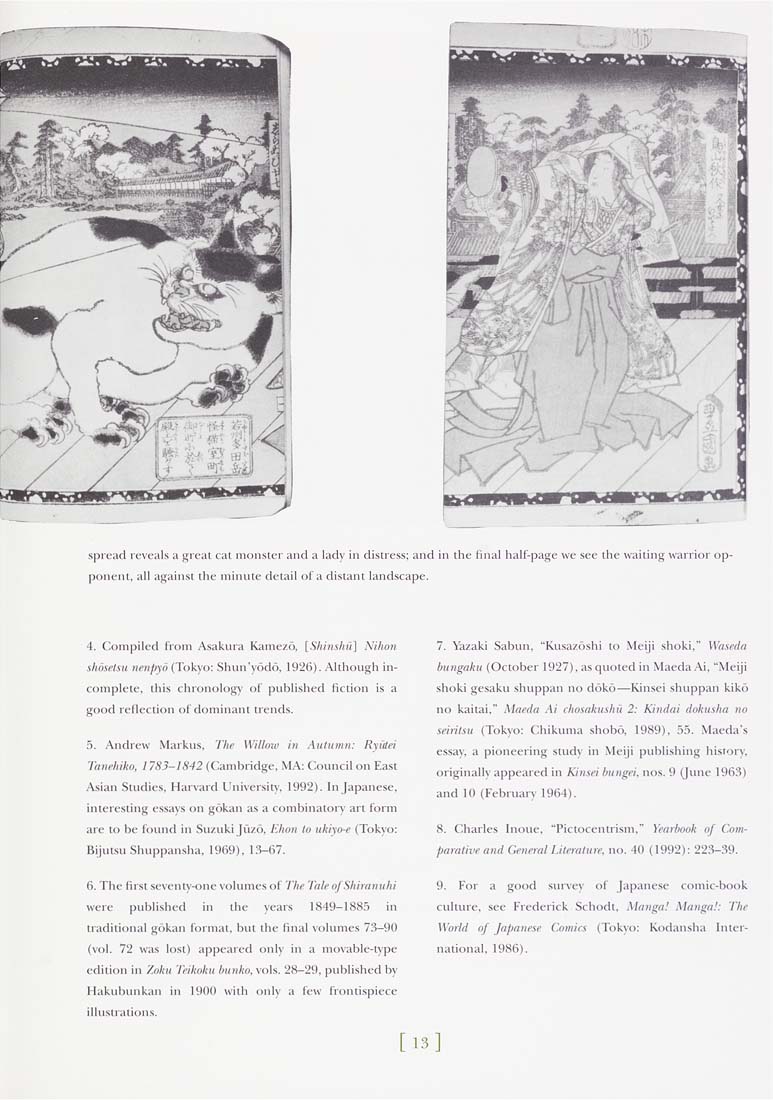Columbia Library columns (v.45(1996))
(New York : Friends of the Columbia Libraries. )
|
||
|
|
|
|
| v.45,no.1(1996:Spring): Page 13 |

spread reveals a great cat monster and a lady in distress; and in the fin ponent, all against the minute detail of a distant landscape. f-page wc see the wailing ^^■a 4. (:om])iled from Asakura Kame/o, [Shinshu] X'ilion shijietiu nenpyi) (Tokyo: Shun'yodo, 192f>). Although in¬ complete, this chronology of published fiction is a good reflection of dominant trends. 5. Andrew Markus, The Willow in Auliiinn: Ryulei Tanehiko, 1783-1842 (Cambridge, MA: Council on East Asian Studies, Harvard University, 1992). Injapanese, interesting essays on gokan as a combinatory art form are to be found in Suzuki Juzo, Ehon to ukiyo-e (Tokyo; Bijutsu Shuppausha. 1969), 13-67. 6. The first seveiuy-one vnhnnes of The Tale of Shiranuhi were published in the years 1849-1885 in traditional gokan format, but the final volumes 73-90 (vol. 72 was lost) appeared only in a movable-type edition in Zoliu Teikoku bunko, vols. 28-29, published by Hakubunkan in 1900 with only a few frontispiece ilhislialions. 7. Yazaki Sabun, "Kusa/oshi to .Meiji siioki." W'ascda bungaku (October 1927), as quoted in Maeda Ai, "Meiji shoki gesaku shuppan no doko—Kinsei shuppan kiko no kaitai," Maeda Ai chosakushu 2: Kindai dokusha no seiritsu (Tokyo: Chikuma shobo, 1989). 55. Maeda's essay, a pioneering study in Meiji publishing history, originally appeared in Kinsei biingci, nos. 9 (|une 1963) and 10 (February 1964). 8. Charles Inouc, "Pictocentiism," Yearlmnk of Com¬ parative and General Lileralure. no. 40 (1992): 223-39. 9. For a good survey of Japanese comic-book culture, see Frederick Schodt. Manga! Manga!: The World of Japanese Comics (Tokyo: Kodansha iiuei- national, 1986). [is: |
| v.45,no.1(1996:Spring): Page 13 |







